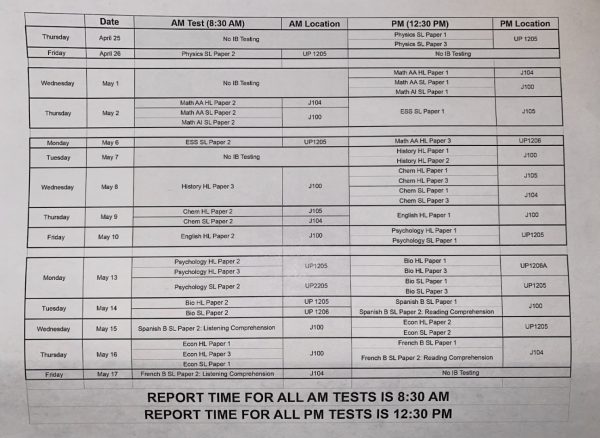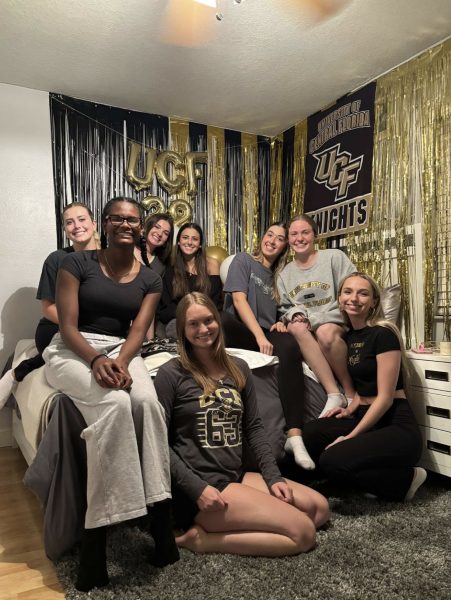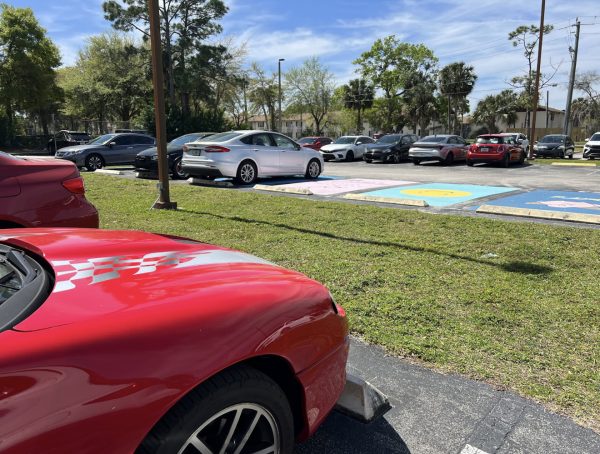BREAKING THE STIGMA AROUND WOMEN IN STEM
How young women are being inspired to pursue STEM careers, despite the gender gap.
Contributed from Time Magazine
Katie Bouman was the first scientist to ever photograph a black hole.
April 28, 2019
Over the past couple of weeks, a group of international astronomers have captured the first ever digital image of a black hole. The discovery not only holds a major historical momentum among the scientific community here in the U.S., but worldwide as well. It has highlighted the importance of females in STEM (science, technology, engineering, and medicine/math) fields. Throughout history, many females have made large scale contributions in forms of code, technology, and service, to scientific discovery that progressed and unlocked key information about our earth and beyond. However, with the wake of recent “astronomical” events, such as the image captured of a black hole, the importance of women in STEM professions is being recognized more than ever. Discoveries like this will inspire many young girls to pursue a career in a predominantly male field, in hopes of one day making such ground-breaking discoveries as this one.
Generally, there are multiple factors that contribute to the spread of individuals in STEM related fields. Components such as racial and ethnic backgrounds, socioeconomic status, and familial situation all determine career paths and futures for thousands of young students. For STEM specifically, the more common divide tends to be gender, with race closely following in a slightly more subdued and dispersed manner.
About half of the bachelor degrees awarded to college graduates are received by females. While this statistic seems promising, the gap surfaces once you examine specific fields of study. For instance, less than twenty percent of the bachelors degrees earned for studies such as computer science and engineering are awarded to women, with the odds becoming slimmer the higher the education (masters or doctorate) and the type of ethnic minority.
In regards to the STEM workforce, only 29% of all STEM career positions are being held by women. While considering the possibility that many women choose not to enter a STEM career purley of out of lack of interest, other discouragements will often result in a gender imbalance. STEM is a competitive field that requires dedication and discipline. However, women are not known to be lacking such characteristics, and if they are it is often the result of a social or cultural construct.
Girls for Science is an organization that recognizes this gap. Started by sisters Divya Srinivasan and Sweta Srinivasan, it was created to inspire and expose young girls to STEM and the many opportunities it holds. Its main goal is to one day eradicate the gender gap that lies in the field.
“If we can inspire girls and teach them about STEM, hopefully the inequality will no longer exist in the future,” said Divya.
Divya also explained why she believed the gap exist. She notes how woman have been pushed into more domestic tasks through history and that the effects of this push are still being felt today.
“Historically, women have taken up more domestic tasks compared to men and it’s been like that for a long time. In certain places, it still is like that,” noted Divya. “This part of the reason as to why there is a significant lack of women in STEM.”
Katherine Abia-Okon is a recently graduated Medical Student from Kharkiv National Medical University in Kharkiv, Ukraine. Currently, Abia-Okon is stationed in Boston, Massachusetts with a promising career in the medical field. Her struggle as an immigrant, ethnic minority, and a woman stretched well into her journey of finding the right career. When she was younger, she notes that she was exposed to the medical field and it nurtured her curiosity and success. With the support of her family, she was able to pursue her dream.
“I chose a STEM career because I was fortunate as a young girl to recognize my curiosity for medicine and stayed true to the path of actualizing my dream of becoming a doctor no matter how hard it was to achieve,” she said.
Abia-Okon, similar to Divya, also recognizes the major gender gap in STEM. She notes how it is an idea that is not exposed to many young girls and stigmatized to be a males only career. As time goes on, however, she notes that this stigma is changing and women are destroying this stereotype slowly.
“There is the unfortunate idea that it’s a boys only club,” she said. “However, many women are breaking these archaic stereotypes.”
Throughout history, women have been neglected of their right to be recognized of their scientific achievement. More often, women tend to be guided away from STEM interests toward more domestic lives. The stigma of women and STEM is slowly changing however, and with more encouragement many women are beginning to create spots at the table for themselves. Their importance in STEM is starting to be recognized and young girls are becoming inspired by the women breaking barriers.
“It is important for women to enter the STEM fields because it allows for more diversity. Women also have the ability to provide more perspectives on a problem, leading to a better solution,” said Divya.



































